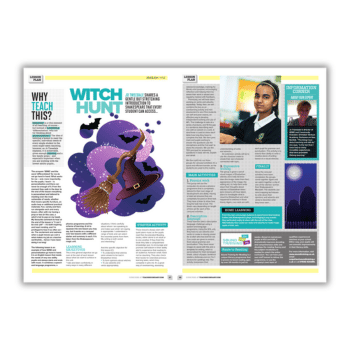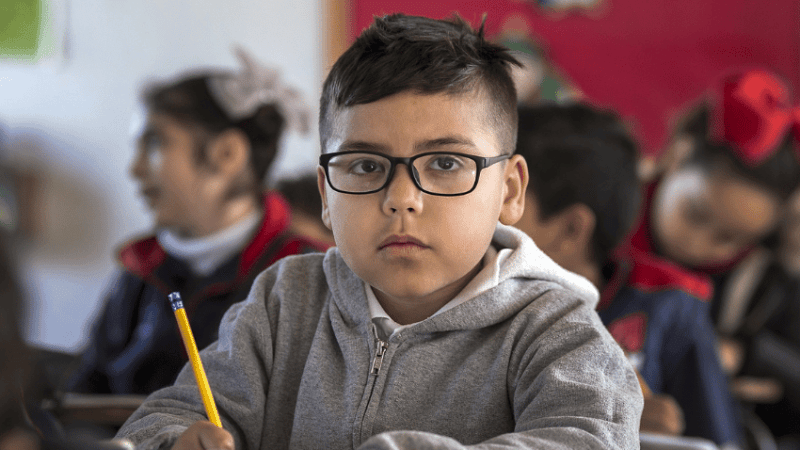Neurodiverse child – Deliver more learning for less effort

If you want your neurodiverse learners to thrive, says Lucy Kuper, step away from the behaviour policies and concentrate on your rapport…

- by Lucy Kuper

A ‘do less, get more’ approach may seem like a paradoxical suggestion when considering how to better support a neurodiverse child. However, with a few savvy, evidence-based strategies to hand, you can indeed support these learners in your classroom almost effortlessly.
The vast majority of SEND learners fall into a series of broad difficulty categories – including, but by no means limited to, attention span, coordination, literacy and motor/language/social/planning and organisation skills.
We could label these types of learning disorders as ‘autism’, ‘dyslexia’, ‘ADHD’, ‘dyspraxia’ or ‘dysgraphia’. However, they could just as easily not be formally diagnosed. This is because the practice of obtaining of a diagnosis can be expensive. Parents will often pay privately for this.
It’s important to be aware of how a neurodiverse child can present in the classroom. Diagnosed or undiagnosed, they make up a significant 80% of the SEND learner cohort – and that proportion is rising.
Lost and confused
Many learners will fail in the classroom because they haven’t developed enough in the way of learning skills to support the demands of otherwise routine academic learning.
Often, it may be that an individual lacks a fundamental classroom skill. This might be literacy, reading comprehension, writing and/or reading fluency.
It’s very easy for these children to get lost – and also exhausting, frustrating and confusing. These learners will frequently lack confidence and self-esteem. Poor learning behaviours often mask an underlying difficulty with accessing the classroom.
The process of making your classroom a safer and more accessible learning environment is the essence of ‘reasonable adjustments’ and measures set out in the SEN Code of Practice.
SEN learners tend to thrive in classrooms where there’s a strong rapport between teacher and students. This kind of environment will give them the resilience and motivation that leads to higher levels of study, hard work and focus.
That’s not just good for the mental health of your students. It will also make your classroom a safe environment in which children get to feel valued and empowered to succeed and thrive.
Teacher rapport
Being a kind and likeable teacher will go a long way towards supporting vulnerable learners. It might even alter the learning trajectories of a neurodiverse child.
That said, the prospect of trying to avoid arguments with children who have autism or struggle with social interaction, having to deal with moments of high drama from an ADHD child or dealing with poor handwriting while marking are all going to make your job harder.
“Being a kind and likeable teacher will go a long way towards supporting vulnerable learners”
There’s some who might advocate for strict, ‘zero tolerance’ discipline and behaviour policies. However, such ‘stick over carrot’ approaches are known to push children already struggling with academic routines even further away from the learning fold.
Once you realise that student-teacher rapport is the X-factor at play here, rather than just planning and marking, things will become considerably easier.
A neurodiverse child will always remember how you made them feel, so get your neurodiverse students feeling valued and appreciated. Actively draw them into the learning fold.
Collaborative philosophy
Many SEN learners will experience difficulties with maintaining their attention and concentration, and reading at a certain skill level. They’ll get lost easily. They might be unsure of which page they need to be on. Or they might be unsure about what it is they’re supposed to be learning.
Encouraging a more caring classroom environment with a reduced sense of competition can contribute towards creating a setting that’s not just better for SEND learners, but for everyone else in class as well.
Trending
Never underestimate the extent to which a learner with SEND learner might not be accessing their learning in the ways they ought to be. Often, they can simply sit there quietly, not engaging.
Whether it’s naturally quiet children, or more typically disruptive children – if they can’t access the learning that’s taking place, you have a problem.
Collaborative learning involves understanding that children can support other children in their learning. It’s about making sure students understand the tasks you’ve set them and where they should be. And that they then feel able to share and talk about ideas and learning.
“If they can’t access the learning that’s taking place, you have a problem”
To that end, do what you can to create a culture in which children are constantly learning and sharing from one another. Be mindful of the extent to which children will tend to listen more to their peers than to the adults in their lives.
Far from holding non-SEND students back, as we might fear, this cooperative approach allows for a greater application of students’ verbal skills. They need to explain their ideas and concepts to each other, mutually reinforcing their learning and understanding in the process. Let your learners take the lead in supporting one another.
Practical considerations for a neurodiverse child
Technology can, of course, be a hugely helpful aid to neurodiverse learners. For instance, when laptops read text aloud, this enables some learners to express their knowledge and emotions non-verbally.
Where movement breaks are concerned, I tend to build in short breaks when I observe learners running low on attention and concentration levels. Movement breaks are an easy way of setting aside a quick two or three minutes for physical movement.
This can completely shift the energy in the room. When you go back, everybody’s suddenly a better learner for it.
That brings us to metacognition, and the benefits of students being able to understand the learning process itself. The more successful learners in your class will know how and what to do. But neurodiverse learners stuggling in class typically won’t – which is partly why they struggle.
My own favourite metacognition tips include reading back your writing and self-correcting to sharpen literacy skills. I tell my class that if they find a mistake but are able to self-correct it themselves, then it’s almost as if they never made that mistake in the first place.
Quiet classrooms
Yet for all the gains we make from discussion-heavy collaborative learning, quiet classrooms can be particularly effective for reading and writing activities. Vary things, so that alongside those buzzy class discussions there are also quiet classroom sessions that are dense with learning. Undertake more cognitively demanding writing tasks during these.
Neurodiverse students, who can have trouble concentrating in the presence of too much noise, are likely to find them especially helpful.
The best ideas around classroom practice aimed at bringing out the best in your neurodiverse learners will likely not focus so much on planning or marking. Instead, focus your efforts on making the classroom a walk in the park – both for you, and your students.
What’s most important is how you make your students feel; how you motivate and include them. Ultimately it’s about what you’re doing to create a learning environment that’s rich in nurturing strategies for all learners.
Lucy Kuper is a dyslexia specialist teacher and literacy consultant. Prior to this she taught for 20 years at a series of inner London comprehensives. She is also a member of both Patoss, the professional association of teachers to students with specific learning difficulties, and the British Dyslexia Association










